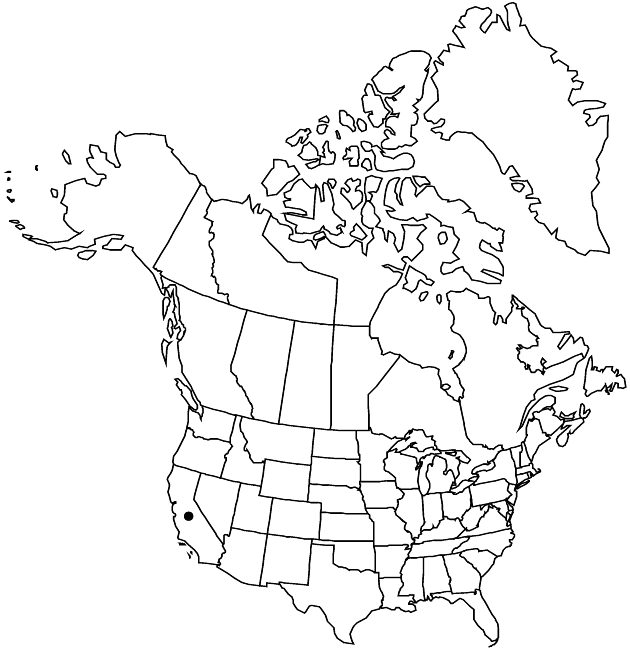Difference between revisions of "Perityle inyoensis"
Sida 3: 278. 1968.
FNA>Volume Importer |
FNA>Volume Importer |
Revision as of 18:50, 24 September 2019
Perennials or subshrubs, 12–25 cm; pilose-villous indument intermixed with short glandular hairs. Leaves (opposite or alternate): petioles 5–20(–50) mm; blades orbiculate, ovate, or ovate-deltate, 8–18(–21) × 6–12(–15) mm, margins serrate to serrate-lobed. Heads borne singly or (2–3) in corymbiform arrays, 7–8.5(–9) × 5–7(–8) mm. Peduncles 8–40 mm. Involucres campanulate. Phyllaries 14–21, linear-lanceolate to sub-lanceolate, 5.5–6.5 × 1.1–1.5 mm. Ray florets 0. Disc florets 35–60; corollas yellow, tubes 1.4–1.6 mm, throats subtubular to subfunnelform, 2–2.4 mm, lobes 0.6–0.7 mm. Cypselae narrowly oblanceolate to suboblanceolate, (2.5–)3–3.5 mm, margins thin-calloused, short-hairy; pappi usually inconspicuous, callous crowns, rarely of minute scales. 2n = 36.
Phenology: Flowering spring–fall.
Habitat: Dry, rocky slopes
Elevation: 1800–2800 m
Discussion
Of conservation concern.
Perityle inyoensis occurs in the southern Inyo Mountains. It is allied to P. megalocephala, which occurs at intermediate and lower elevations to the north and east of P. inyoensis.
Selected References
None.
